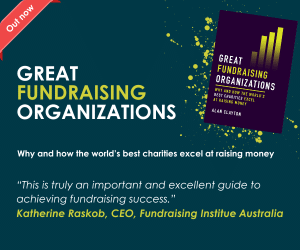A busy week for nonprofit brands in Second Life

Last week was particularly busy in terms of the activities of nonprofit organisations in Second Life, with WWF unveiling its ‘Conservation Island’ plus the formal launch of the Nonprofit Commons community – providing free virtual office space and advice for nonprofits wanting to get started in the virtual world.
Nonprofit Commons launched on Tuesday, with 60 people in San Francisco joining over 100 online in Second Life at the launch event. Supported by Second Life entrepreneur Anshe Chung, Nonprofit Commons offers nonprofits new to Second Life a free parcel of land including an empty office, which they can then use as a base to trial different activities.
Then on Thursday, WWF formally unveiled its own Second Life presence, ‘Conservation Island’. When you visit, you find yourself at the foot of a waterfall looking out over a short street and an orang-utan in an ice-cream van. From there you can visit various displays explaining different aspects of WWF’s work, from bycatch to climate change.
It’s great to see WWF addressing global issues using the global medium of Second Life. However, I’m sad to say that Conservation Island really doesn’t make the most of Second Life’s interactive potential – and as a result I fear it’s not going to achieve the level of engagement and education that it could have done. There are all of the usual things, like links out to the WWF site and free branded avatar clothing, but that’s about it. In many cases the animals I spotted around the island couldn’t be interacted with at all. Overall, it feels rather like a missed opportunity, which continued development will hopefully help address.
Over recent months Second Life has been receiving quite a lot of negative media coverage. Time Magazine went so far as to include Second Life in its five worst websites list and Wired got in on the act too, with an article about corporate marketers wasting millions trying to establish a brand presence in Second Life.
Reports like these are a natural counter-balance to the incredible hype Second Life has received over the last 6 to 12 months. As a fairly regular visitor I can confirm that it really doesn’t live-up to the type of PR-spin which has people expecting a truly lifelike virtual world – but that’s no reason to right it off as completely pointless.
Set aside the fact that the graphics are not up to the quality of the latest gaming consoles, that only some 30k of its claimed 8m residents are ever online at the same time, and that if more than 70 people visit a single place then the whole thing grinds to a halt. What we have here is still a fascinating experiment in online social networking, enabling people from all around the world to communicate and interact with each other in a new and potentially highly creative way.
That said, I’m not advocating that it come first in every organisation’s list of Web 2.0 marketing plans. I simply believe that it shouldn’t be ruled-out without fair consideration.
Second Life’s potential for good was amply illustrated by last month’s wonderfully well designed and executed Second Life Relay for Life, raising over $110k for the American Cancer Society – and hopefully the Nonprofit Commons initiative will enable many more good causes to test new ideas and reach new audiences through this innovative online environment.
Advertisement
![]()


